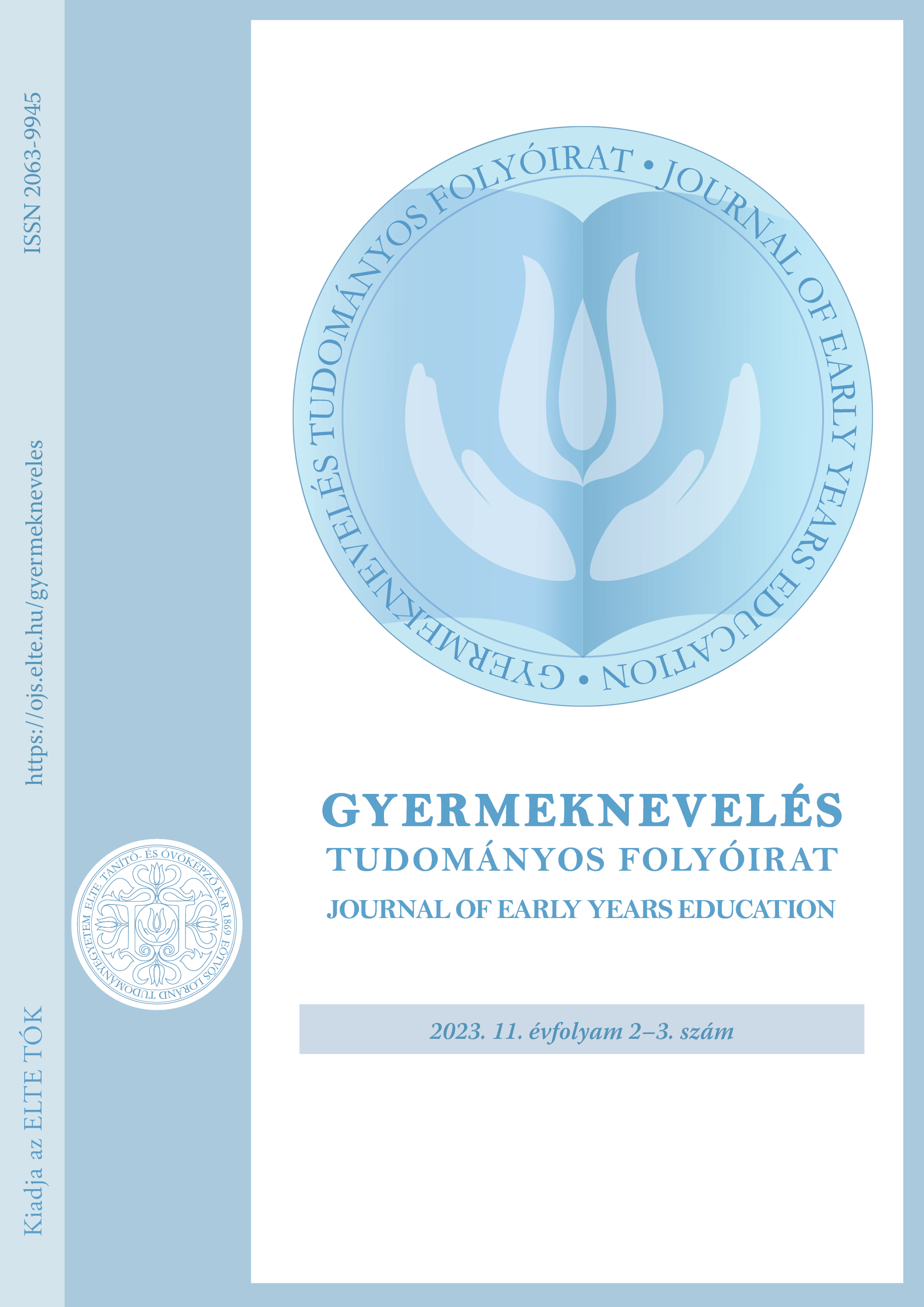Travelling with a Red Umbrella – A Theoretical and Practical Approach to the Wordless Picture Book Genre
DOI:
https://doi.org/10.31074/gyntf.2023.2-3.178.191Keywords:
wordless picture books (silent books), the developing effects of “reading” wordless picture books, text and visual literacy, “reading” pictures, a plan for children’s activity, The UmbrellaAbstract
Our study focuses on a genre that is hardly known in Hungary: the silent book (wordless picture book). We begin our theoretical approach by presenting the various labels by which the genre is known and the ontological features behind them, and then highlight some important moments in the history of wordless picture books. We briefly discuss the factors that may explain why this genre is still barely present in Hungarian publishing, and contrast this with the popularity of the genre especially in the English-speaking world. Based largely on foreign literature, we attempt to show the practical benefits of wordless picture books for children (visual education, emotional education, mother tongue education), in addition to their aesthetic merits. And finally, we offer ideas for an activity plan that can be easily implemented in order to explore a particular wordless picture book with children (Ingrid and Dieter Schubert’s The Umbrella).Downloads
References
Ajánló bibliográfiák a képkönyvekhez
Abrahamson, R. F. (1981). An Update on Wordless Picture Books with an Annotated Bibliography. The Reading Teacher, 34(4), 417–421. https://www.jstor.org/stable/20195261
Afoma: Wordless Picture Books Worth “Reading” https://readingmiddlegrade.com/wordless-picture-books/
Képkönyvek kicsiknek és nagyoknak – életkori ajánló bibliográfia és irodalomjegyzék. (2021). In K. Goda & R. Péterfi (Ed.), Szöveg nélküli képkönyvek. Elmélet és gyakorlat. (pp. 167–181), Oktatási Hivatal – Országos Pedagógiai Könyvtár és Múzeum.
Nézve olvasd! – Módszertani ajánló és szöveg nélküli képkönyvek (óvodásoknak).
https://www.opkm.hu/?lap=dok/dok&dok_id=501
Reese, C. (1996). Story developement using wordless picture books. The Reading Teacher, 50(2), 172—173. https://www.jstor.org/stable/20201735
Swan, A. M.(1992). Wordless picture book buddies. The Reading Teacher, 45(8), Exemplary Practices in Literacy Instruction, 655. https://www.jstor.org/stable/20200950
Irodalom
Crawford, P. & Hade, D. (2000). Inside the picture, outside the frame: Semiotics and the reading of wordless picture books. Journal of Research in Childhood Education, 15(1), 66–80. https://doi.org/10.1080/02568540009594776
Goda, B. (2021). Bevezetés a szöveg nélküli képkönyvek (silent bookok) alkalmazásába. In Goda, K. & Péterfi, R. (Eds.), Szöveg nélküli képkönyvek. Elmélet és gyakorlat. (pp 13–39). Oktatási Hivatal – Országos Pedagógiai Könyvtár és Múzeum.
Kelemen, R. (2022). Az egyetemes emberi élet memoárja. Kortárs, (9), 80–84.
Le Roux, A. (2012). The production and use of wordless picture books in parent-child reading: an exploratory study within a South African context. Stellenbosch University, http://hdl.handle.net/10019.1/20177
Louie, B. & Sierschynski, J. (2015). Enhancing English learners’ language development using wordless picture books. The Reading Teacher, 69(1), 103–111. https://doi.org/10.1002/trtr.1376
Lysaker, J. & Hopper, E. (2015). Kindergartner’s emergent strategy use during wordless picture book reading. The Reading Teacher, 68(8), 649–657. https://doi.org/10.1002/trtr.1352
Nagy, N. (2021). Mesék szavak nélkül: olvasási stratégiák képkönyvekhez. In Goda, K. & Péterfi, R. (Eds.), Szöveg nélküli képkönyvek. Elmélet és gyakorlat. (pp 39–51) Oktatási Hivatal – Országos Pedagógiai Könyvtár és Múzeum.
Nodelman, P. (2005). Decoding the Images: how Picture Books work. In Hunt, P. (Ed.), Understanding Children’s Literature, Routledge. Magyar forrás: A KÉPEK DEKÓDOLÁSA. Hogyan olvassuk a képeskönyvek illusztrációit? Mesecentrum, 2023.01.09. https://igyic.hu/esszektanulmanyok/perry-nodelman-a-kepek-dekodolasa.html
Nyhout, A. & O’Neill, D. K. (2013). Mothers’ complex talk when sharing books with their toddlers: Book genre matters. First Language, 33(2), 115. https://doi.org/10.1177/0142723713479438
Read, D. & Smith, H. M. (1982). Teaching Visual Literacy through wordless picture books. The Reading Teacher, 35(8), 928–933. https://www.jstor.org/stable/20198128
Reese, C. (1996). Story development using wordless picture books. The Reading Teacher, 50(2), 172–173. https://www.jstor.org/stable/20201735
Révész, E. (2022). Interjú. Mese, 1(2), 82–91.
Révész, E. (2020). Maros Krisztina: Milyen színű a boldogság? In Révész E. Mentés másként (pp. 547–551). Balatonfüred Városért Közalapítvány.
Salisbury, M. & Styles, M. (2020). Children’s Picturebooks: the Art of Visual Storytelling. Laurence King Publishing .
Serafini, F. (2014). Exploring Wordless Picture Books. The Reading Teacher, 68(1), 24–26 https://doi.org/10.1002/trtr.1294
Downloads
Published
How to Cite
Issue
Section
License
Copyright (c) 2024 Author

This work is licensed under a Creative Commons Attribution-NonCommercial-ShareAlike 4.0 International License.

